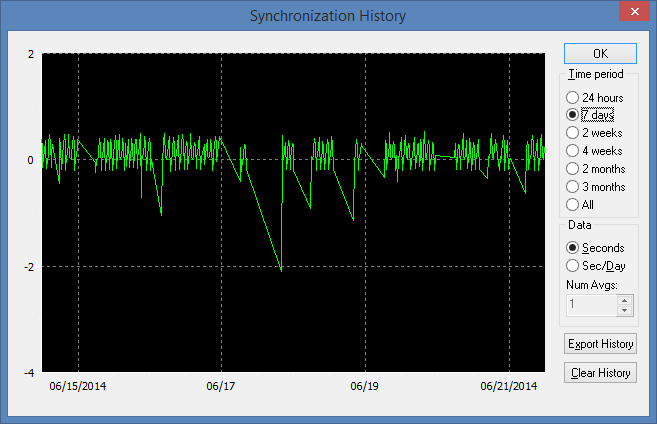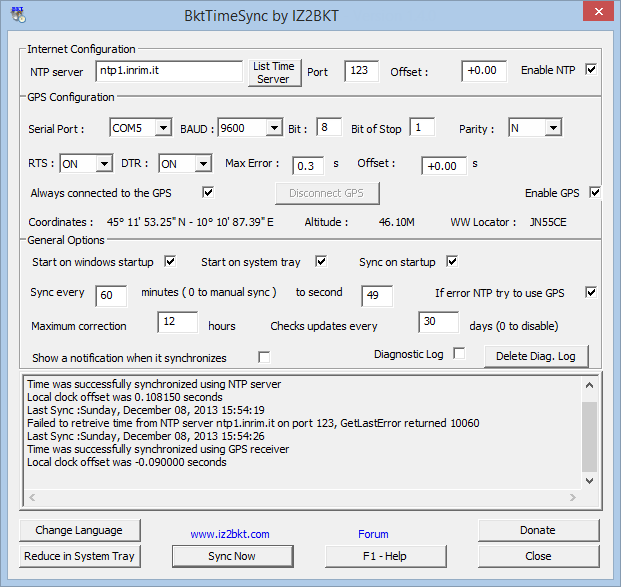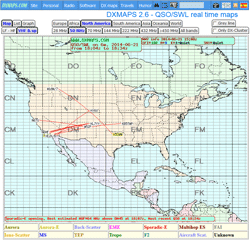
Rover Location Database
Ham Radio
- Hilltopping
- Rover Mast
- Mast Mount
- Generator Pair
- Meteor Scatter
- Meteor Scatter
- Meteor Scatter
- Meteor Scatter
- IC-9100 WSJT-X
- US Major Grids
- US Detail Grid
- Be Careful
- How To QSL
Handy Software for Meteor Scatter
The previous pages are good for the Icom IC-7100. Now, generally speaking, there are several other resources that everyone should consider using to enhance their VFH and Meteor Scatter experience.

Dimension4 Time Synch
This software synchronizes your computer's clock with a time server on the Internet.
Several good software packages are available. Dimension4 is widely used:
- Dimension4: www.thinkman.com/dimension4/
- Version 5.31 is current at time of writing (Feb 2014).

BktTimeSync
If you have GPS but no Internet, then BktTimeSync adjusts your computer's clock using the GPS. It works very well with Bluetooth, USB and serial GPS units, and it's free.
- BktTimeSync
- Version 1.4.1 is current at time or writing (July 2014).
Ping Jockey Client
Ping Jockey Central is a valuable chat room by N0UK for arranging contacts and watching activity.
- PJ Client
- software is the best way to enter the chat room.
Find the link at "Dan (N5TM) has created an excellent new PJ Client". - PJ Web page - is a basic way to join the chat room.

DX Maps Online
This web page shows you VHF openings in real time. The DXMAPS website is a good tool for monitoring for VHF/UHF band openings (10m and higher). The site collects and plots cluster spots and propagation mode information on a world map in real-time. This includes spots from CW Skimmers which monitor beacons on the VHF and UHF bands. This allows one to determine when a VHF/UHF band is open and the directions for possible QSOs from one's location. As you can see from the picture, there was a solid 6m opening on this particular day from my California into the Midwest.
Grid Tracking Maps
DX Labs grid reports
An azimuthal equidistant map server ( http://www.wm7d (dot) net/azproj.shtml ) which produces on-line great circle maps centered at your QTH. This can (?) produce "Most Wanted Grids" maps from this European list e.g. ( http://www.wm7d (dot) net/az_proj/images/wanted_cc.png ).
More Reading
The 6m band is often called the "magic band" because it exhibits many different propagation modes including Sporadic E (Es), Tropo, Aurora, Iconoscatter, Meteor Scatter and even Earth-Moon-Earth (EME or "Moon Bounce"). You can find a good introduction to the magic band, its propagation possibilities and some ideas on how to get started on 6m on these sites:
| < Previous | Page 8 of 13 | Next > |
©1998-2026 Barry Hansen